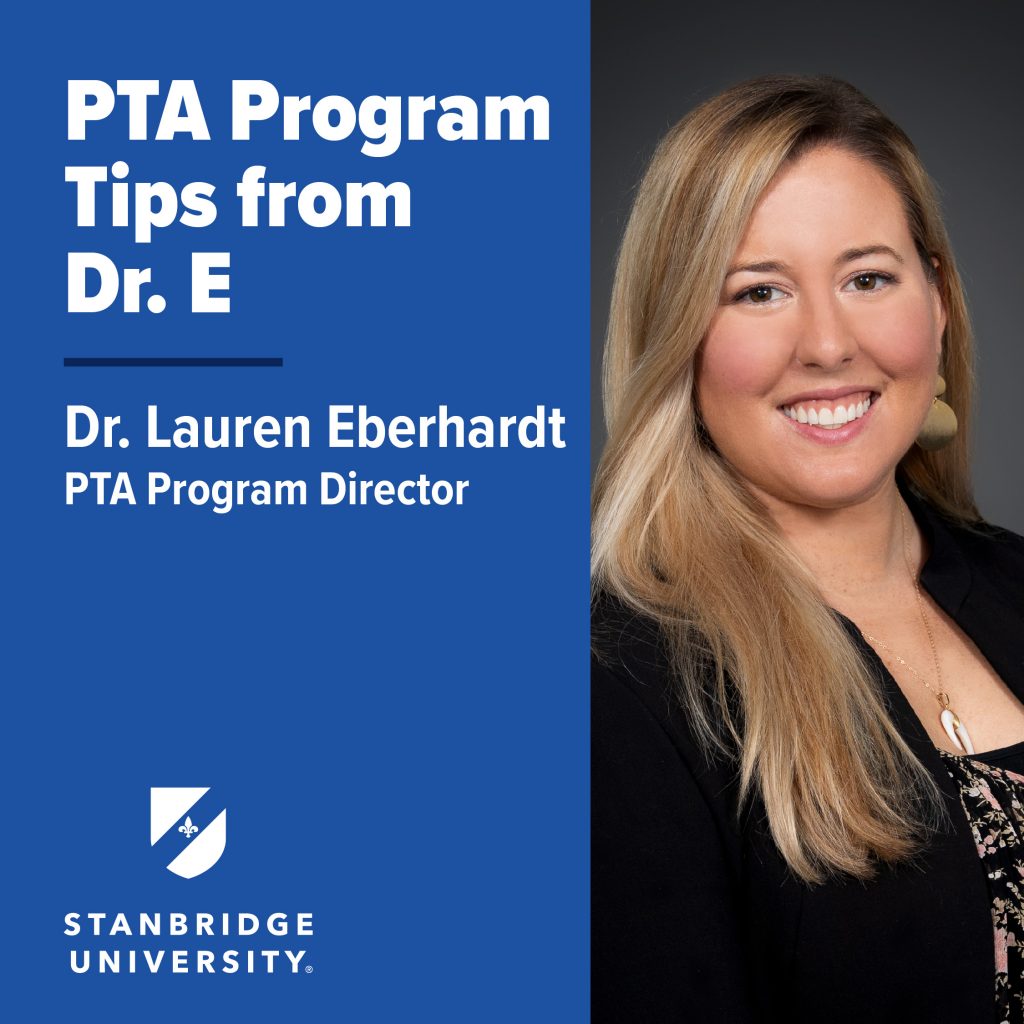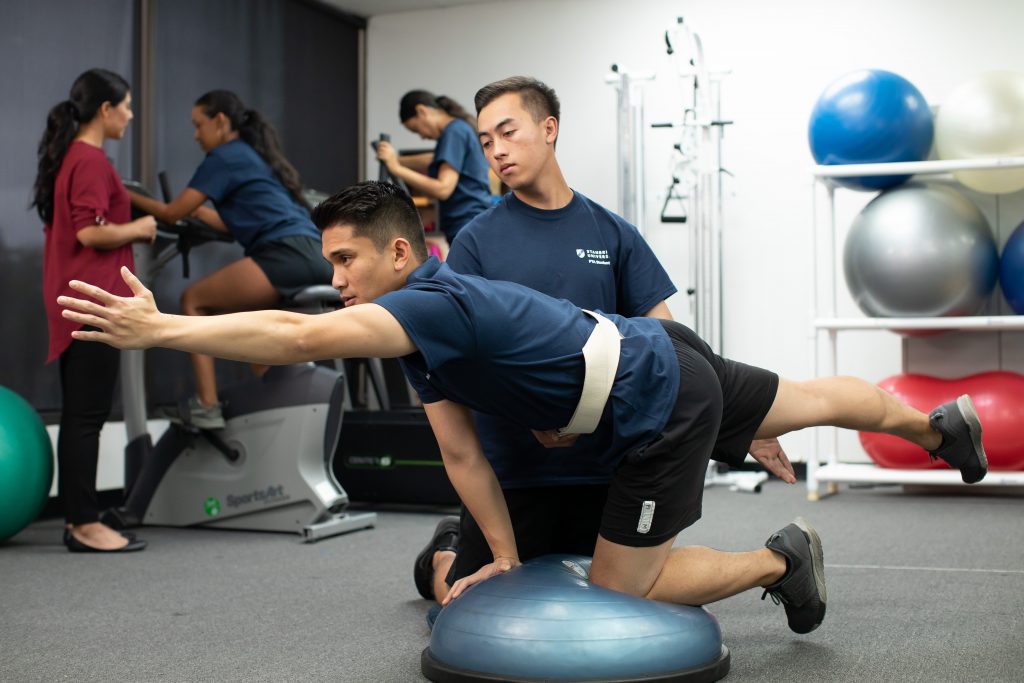PTA Program Tips From Dr. Eberhardt

If you’re enrolled in a Physical Therapist Assistant (PTA) program or are considering enrolling, you know that it’s an academically rigorous program with a lot of information to learn and remember. PTA students must be proficient in anatomy and physiology and have a working knowledge of various medical conditions and treatments. In addition, PTAs must be able to effectively communicate with patients, families, and other members of the healthcare team.¹
With so much to learn, it’s no wonder that PTA students sometimes feel overwhelmed. However, there are several things you can do to set yourself up for success. Keep reading for success tips from PTA Program Director Dr. Lauren Eberhardt.
Tip#1: Don’t stop practicing once you get a technique right!
If you think you’ve mastered a technique, keep practicing. Practice until you can’t get it wrong. It helps to think of various scenarios in which you’ll have to perform the technique correctly, including instances with someone in pain, someone who is confused, someone who is unmotivated.
Tip #2: Practice makes perfect! However…
The statement “practice makes perfect” is only true if you practice the technique correctly, and practicing something incorrectly can work to your disadvantage. Therefore…perfect practice makes perfect.
If you’re ever unsure about a technique or specific exercise, it’s better to ask for corrections than to ingrain it in your mind incorrectly. After all, you’ll want patients to recover quickly, but more importantly, safely.
Tip #3: If you need help, ask for it!

The good news is that you don’t have to be perfect to reap the benefits of perfect practice. You just have to be willing to ask for corrections when you’re unsure about a technique. That’s why PTA students are encouraged to seek guidance from their instructors. Individual, personalized feedback is most helpful because when it comes to perfect practice, there’s no such thing as too much guidance.
PTA students should also take advantage of resources and student support services such as mentoring programs, study groups, and tutoring.
Tip #4: Don’t forget to have fun!
All work and no play makes an easy recipe for burnout. Schedule fun events at least once a week, like going to your favorite restaurant or seeing a new movie. Having something to look forward to can motivate you to stick to your study schedule and complete your tasks. Write it down in your planner so you can see your reward coming (and get a planner if you don’t have one already)!
Physical Therapist Assistant Program at Stanbridge University
If you or someone you know is interested in becoming a PTA, learn more about Stanbridge University’s Physical Therapist Assistant program.
1Source: Bureau of Labor Statistics, U.S. Department of Labor, Occupational Outlook Handbook, Physical Therapist Assistants and Aides, https://www.bls.gov/ooh/healthcare/physical-therapist-assistants-and-aides.htm. As viewed on November 8, 2022.